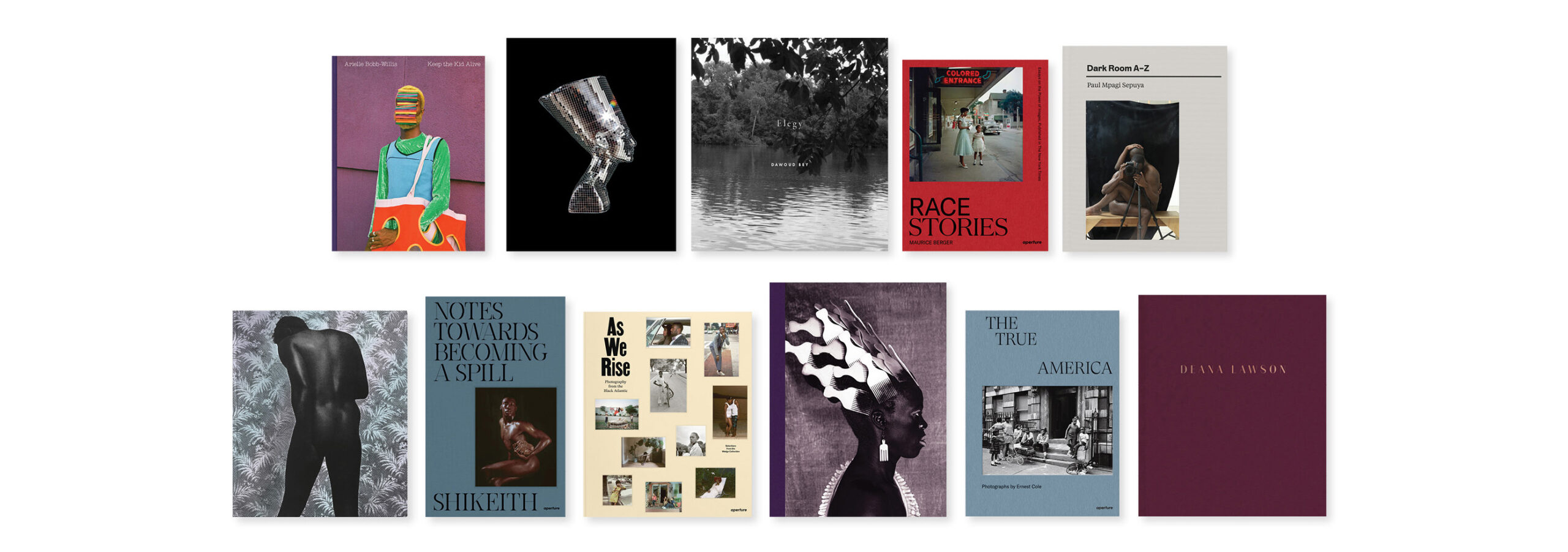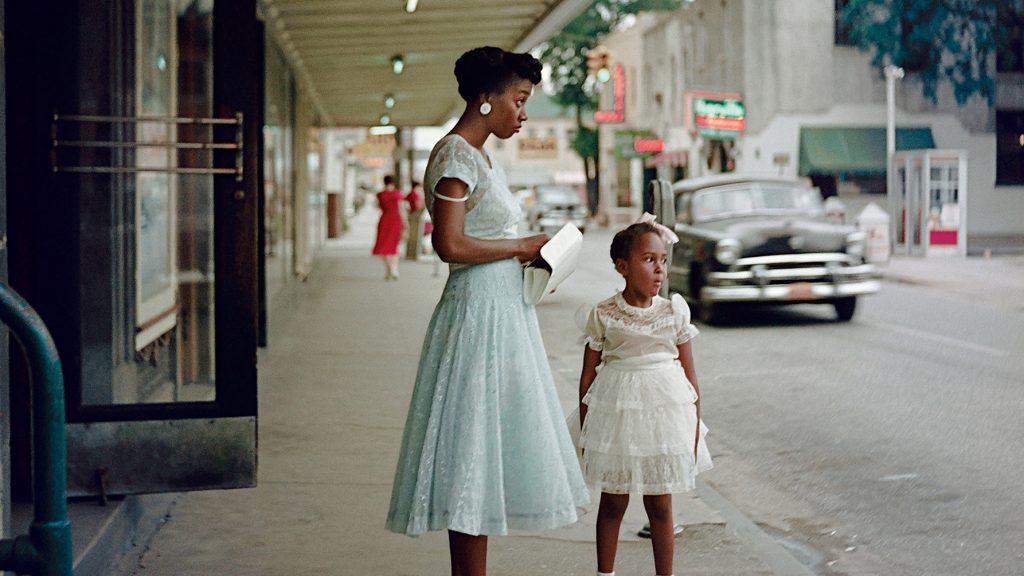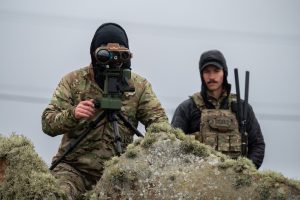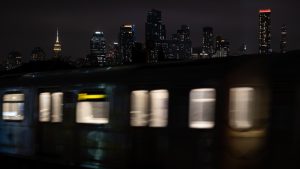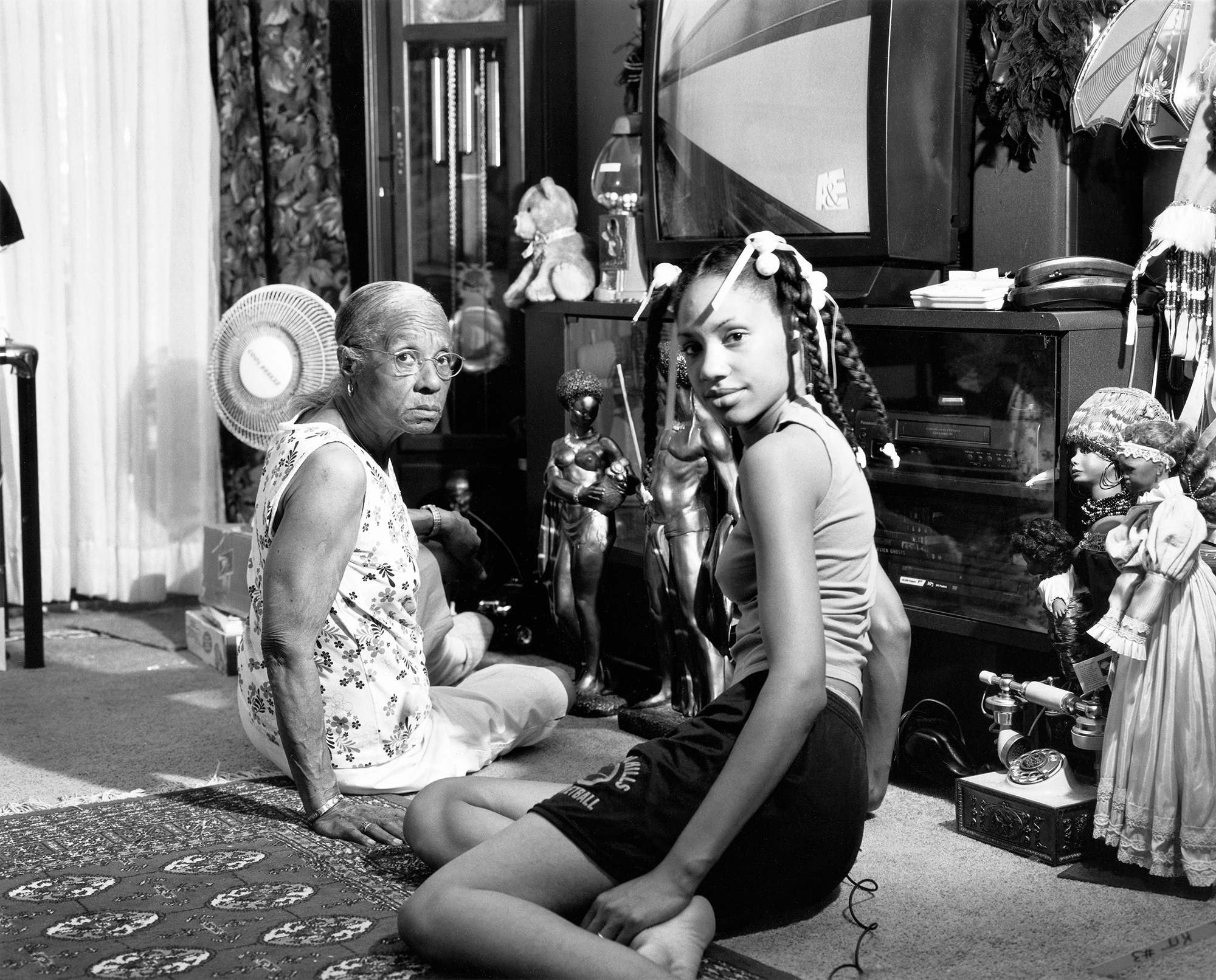
Courtesy the artist and Gladstone Gallery
Race Stories: Essays on the Power of Images, by Maurice Berger (2024)
In Race Stories: Essays on the Power of Images, the late cultural historian Maurice Berger explores the intersections of photography, race, and visual culture. Between 2012 and 2019, Berger first shared these essays in a monthly column on the New York Times Lens blog. Copublished by Aperture and the New York Times, this volume marks the first title in Aperture’s Vision & Justice Book Series, created and coedited by Drs. Sarah E. Lewis, Leigh Raiford, and Deborah Willis, which reexamines and redresses historical narratives of photography, race, and justice.
Edited by Marvin Heiferman, this anthology brings together seventy-one essays that examine the transformational role photography plays in shaping ideas and attitudes about race, and how photographic images have been instrumental in both perpetuating and combating racial stereotypes. From pivotal moments in American history to the ways in which images by LaToya Ruby Frazier, Gordon Parks, Jamel Shabazz, Pete Souza help us see the world anew, Race Stories showcases Berger’s lifelong endeavor to distill complex ideas about racial equity. As Henry Louis Gates, Jr., writes in the book’s foreword: “This collection establishes not only Maurice Berger’s place in the history of the criticism of photography but also his role as a social philosopher determined to underscore, essay by essay, all that unites us as human beings.”
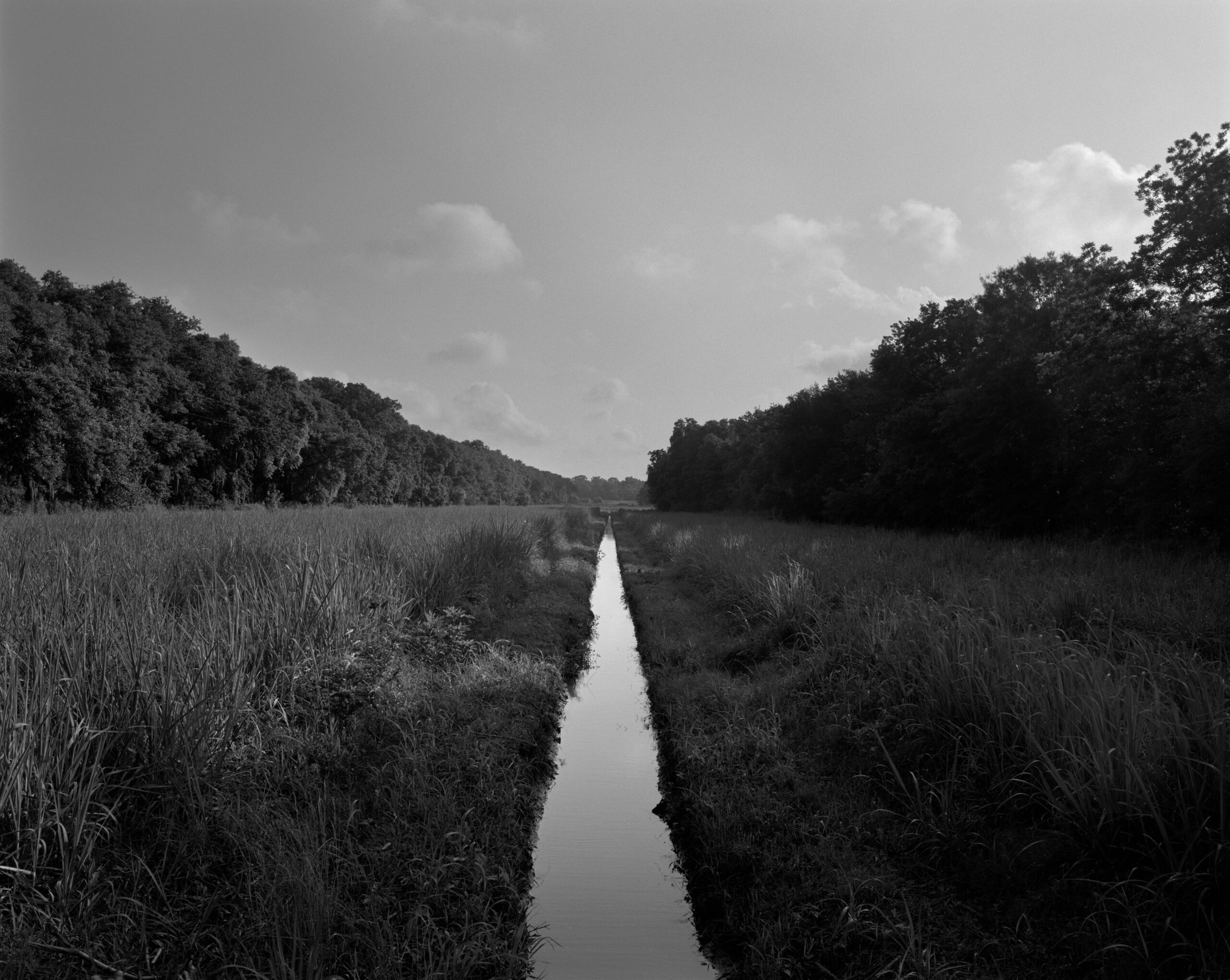
Courtesy the artist
Dawoud Bey: Elegy (2023)
In Elegy, Dawoud Bey focuses on the landscape to create a portrait of the early African American presence in the United States. Renowned for his Harlem street scenes and expressive portraits, this volume marks a continuation of Bey’s ongoing work exploring African American history. Copublished by Aperture and the Virginia Museum of Fine Arts, Elegy focuses on three of Bey’s landscape series—Night Coming Tenderly, Black (2017); In This Here Place (2021); and Stony the Road (2023)—shedding a light on the deep historical memory still embedded in the geography of the US.
Bey takes viewers to the historic Richmond Slave Trail in Virginia, where Africans were marched onto auction blocks; to the plantations of Louisiana, where they labored; and along the last stages of the Underground Railroad in Ohio, where fugitives sought self-emancipation. By interweaving these bodies of work into an elegy in three movements, Bey not only evokes history but retells it through historically grounded images that challenge viewers to go beyond seeing and imagine lived experiences. “This is ancestor work,” Bey tells the New York Times. “Stepping outside the art context, the project context, this is the work of keeping our ancestors present in the contemporary conversation.”

Courtesy the artist
Arielle Bobb-Willis: Keep the Kid Alive (2024)
Born in 1994 in New York, Arielle Bobb-Willis first started to experiment with photography at the age of fourteen, when she was gifted an old Nikon N80 film camera by her high school history teacher after her family relocated to South Carolina. Since then, Bobb-Willis has become a rising photographer, having shot commissions for a range of magazines and fashion brands including Vogue, the New York Times, Vanity Fair, Nike, Hermès, and more. In 2024, Aperture published the artist’s first monograph, Keep the Kid Alive. Previously, Aperture had featured Bobb-Willis’s work in the The New Black Vanguard (2017), which highlights the work of fifteen contemporary Black photographers rethinking the possibilities of representation.
In Keep the Kid Alive, Bobb-Willis invites audiences into a brightly imaginative world, filled with dynamic colors, gestures, and unusual poses of the artist’s own creation. Transforming the streets of New Orleans, New York, and Los Angeles into lush backdrops for her wonderfully surreal tableaux, Bobb-Willis makes unforgettable images that expand the genres of fashion and art photography. As Bobb-Willis notes in an interview from the book, “Photography is, and will always be, a daily practice of falling in love with as many things as I can.”
Collect a limited-edition print by Arielle-Bobb Willis from Keep the Kid Alive.
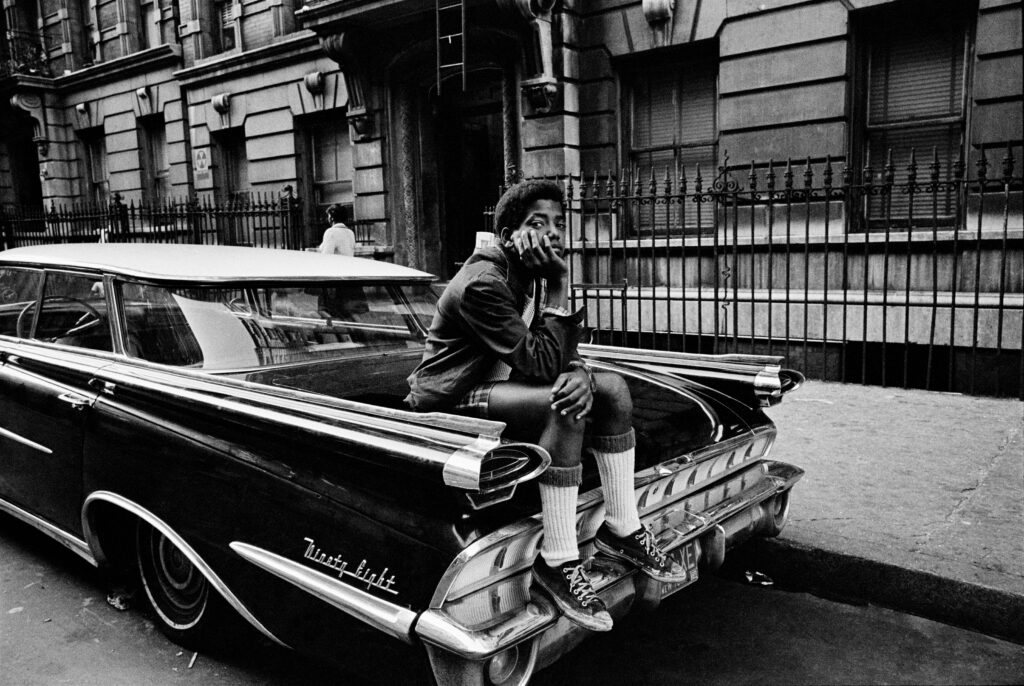
© The Ernest Cole Family Trust
Ernest Cole: The True America (2024)
After fleeing South Africa to publish his landmark book House of Bondage in 1967 (reissued by Aperture in 2022) on the horrors of apartheid, Ernest Cole became a “banned person” and resettled in New York. Supported by a grant from the Ford Foundation, Cole photographed the city’s streets extensively, chronicling daily life in Harlem and around Manhattan. In 1968 he traveled across the country to cities including Chicago, Cleveland, Memphis, Atlanta, Los Angeles, and Washington, DC, as well as to rural areas of the South, capturing the activism and emotional tenor in the months leading up to and just after the assassination of Martin Luther King Jr. These photographs reflect both the newfound freedom Cole experienced in the US and the photographer’s sharp eye for inequality as he became increasingly disillusioned by the systemic racism he witnessed.
Cole released very few images from this body of work while he was alive. Thought to be lost entirely, the negatives of Cole’s American pictures resurfaced in Sweden in 2017 and were returned to the Ernest Cole Family Trust. The True America marks the first time these photographs have been brought together in a major publication. This trove of rediscovered work acts as a vital window into American society and redefines the scope of Cole’s photographic work.
Collect a limited-edition print from Ernest Cole: The True America. An exhibition of The True America is on view at the Minneapolis Institute of Art through June 22, 2025.
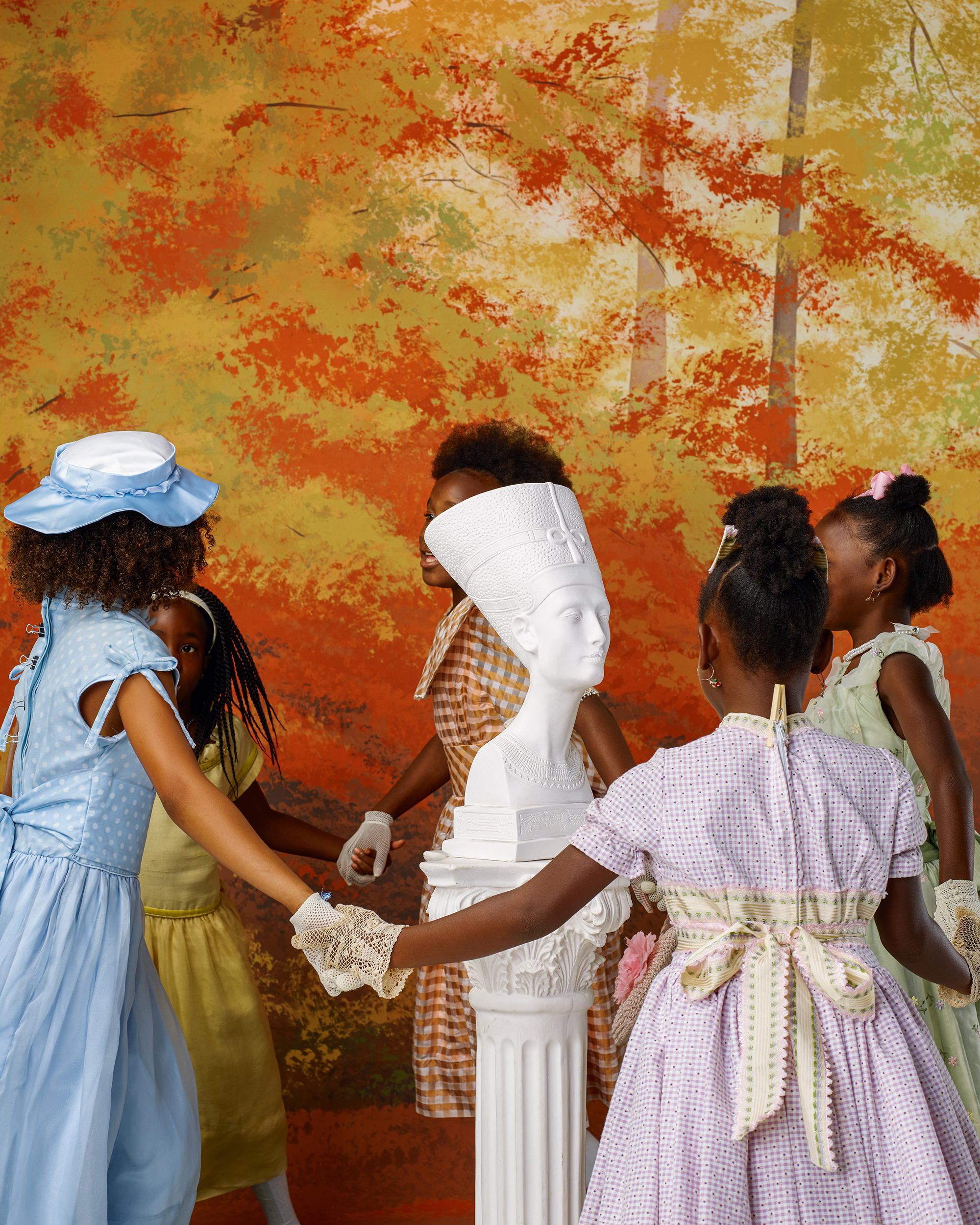
Courtesy the artist
Awol Erizku: Mystic Parallax (2023)
Awol Erizku’s interdisciplinary practice references and reimagines African American and African visual culture, from hip-hop vernacular to Nefertiti, while nodding to traditions of spirituality and Surrealism. The 2023 volume Mystic Parallax is the first major monograph to trace the artist’s career. Spanning over ten years, the monograph blends together his studio practice with his work as an in-demand editorial photographer, including his conceptual portraits of cultural icons such as Solange, Amanda Gorman, and Michael B. Jordan.
Throughout his work, Erizku consistently questions and reimagines Western art, often by casting Black people in his contemporary reconstructions of canonical artworks. “I always think about my work as a constellation, and a new piece is just another star within the universe,” he asserts in his wide-ranging conversation with the curator Antwaun Sargent, included in the book. “This goes back to the idea of a continuum of the Black imagination. When it’s my turn, as an image maker, a visual griot, it is up to me to redefine a concept, give it a new tone, a new look, a new visual form.”
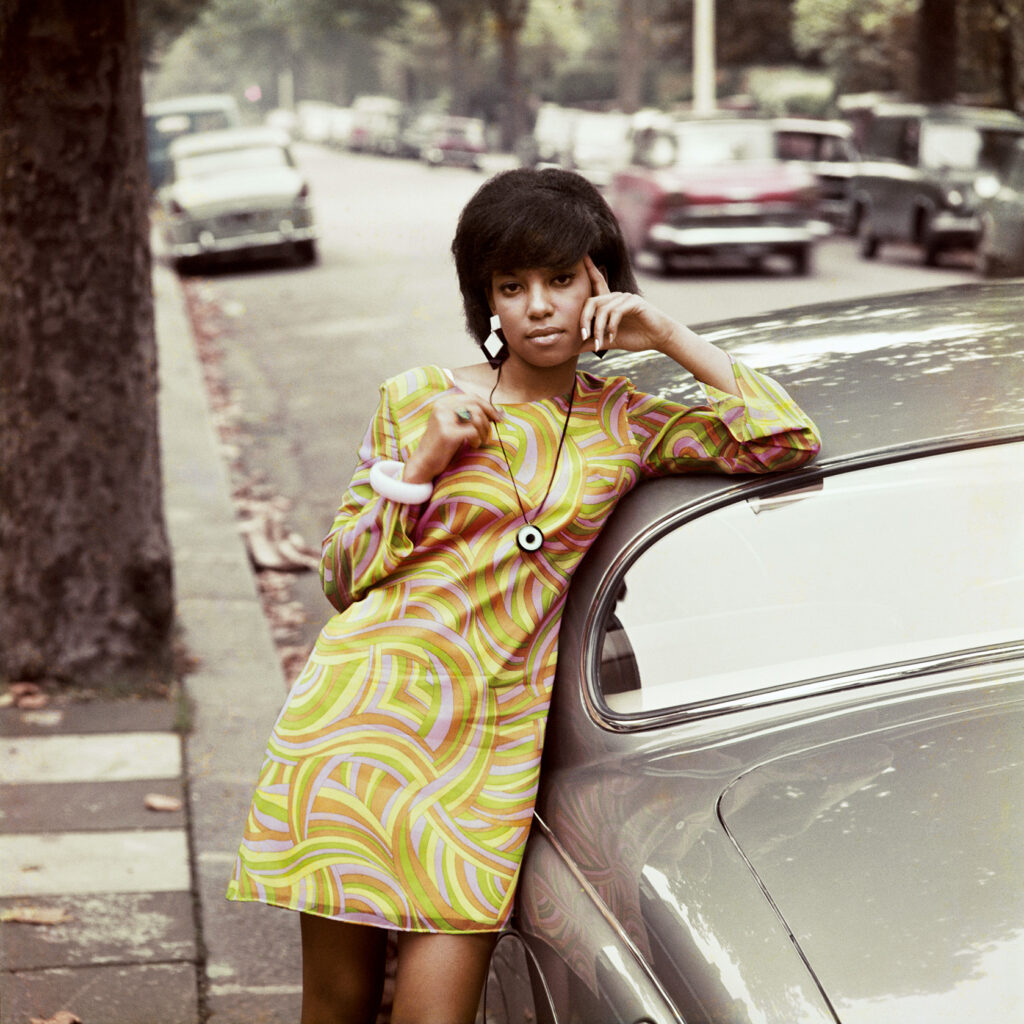
Courtesy the artist
As We Rise: Photography from the Black Atlantic (2021)
In 1997, Dr. Kenneth Montague founded the Wedge Collection in Toronto in an effort to acquire and exhibit work by artists of African descent. As We Rise features over one hundred works from the collection, bringing together artists from Canada, the Caribbean, Great Britain, the US, South America, and Africa in a timely exploration of Black identity on both sides of the Atlantic.
From Jamel Shabazz’s definitive street portraits to Lebohang Kganye’s blurring of self, mother, and family history in South Africa, As We Rise looks at multifaceted ideas of Black life through the lenses of community, identity, and power. As Teju Cole describes in his preface, “Too often in the larger culture, we see images of Black people in attitudes of despair, pain, or brutal isolation. As We Rise gently refuses that. It is not that people are always in an attitude of celebration—no, that would be a reverse but corresponding falsehood—but rather that they are present as human beings, credible, fully engaged in their world.”
Collect a special vinyl LP, As We Rise: Sounds from the Black Atlantic, featuring a celebratory collection of classic and contemporary Black music made throughout the diaspora.

Courtesy the artist
Deana Lawson: An Aperture Monograph (2018)
Deana Lawson has created a visionary language to describe identities through intimate portraiture and striking accounts of ceremonies and rituals. Using medium- and large-format cameras, Lawson works with models throughout the US, Caribbean, and Africa to construct arresting, highly structured, and deliberately theatrical scenes. Signature to Lawson’s work is an exquisite range of color and attention to detail—from the bedding and furniture in her domestic interiors to the lush plants and Edenic gardens that serve as dramatic backdrops.
Published in 2018, Deana Lawson: An Aperture Monograph was the first book by the acclaimed artist. In 2020, Lawson became the first photographer to be awarded the Hugo Boss Prize. Most recently, Lawson was the guest editor of Aperture’s Fall 2024 issue, “Arrhythmic Mythic Ra,” in which she curated a selection of artists past and present to explore the enigmatic nature of photography.
One of the most compelling photographers of her generation, Lawson portrays the personal and the powerful. “Outside a Lawson portrait you might be working three jobs, just keeping your head above water, struggling,” writes Zadie Smith in an essay for the book. “But inside her frame you are beautiful, imperious, unbroken, unfallen.”
Collect a limited edition of Deana Lawson: An Aperture Monograph, featuring a special slipcase and custom tipped-on C-print.

Courtesy the artist
Zanele Muholi: Somnyama Ngonyama, Hail the Dark Lioness, Volume II (2024)
The South African artist Zanele Muholi is one of the most powerful visual activists of our time. Muholi first gained recognition for their 2006 series Faces and Phases that documents the LGBTQIA+ community, creating ambitiously bold portraits in an attempt to build a visual history and remedy Black queer erasure. From there, Muholi began to turn the camera inward, beginning a series of evocative self-portraits. Somnyama Ngonyama, Hail the Dark Lioness, Volume II (2024) is the follow-up to Muholi’s critically acclaimed first title featuring their self-portraits.
In their evocative self-portraits, Muholi explores and expands upon notions of Blackness, and the myriad possibilities of the self. Drawing on different materials or found objects referencing their environment, a specific event, or lived experience, Muholi boldly explores their own image and innate possibilities as a Black person in today’s global society, and speaks emphatically in response to contemporary and historical racisms. “I am producing this photographic document to encourage individuals in my community to be brave enough to occupy spaces—brave enough to create without fear of being vilified,” Muholi states in an interview from the 2018 volume. “To teach people about our history, to rethink what history is all about, to reclaim it for ourselves—to encourage people to use artistic tools such as cameras as weapons to fight back.”

Courtesy the artist
Paul Sepuya: Dark Room A–Z (2024)
Paul Mpagi Sepuya’s photography is grounded in a collaborative, rhizomatic approach to his studio practice and portraiture. Through collage, layering, fragmentation, and mirror imagery, Sepuya encourages multivalent narrative readings of each image.
Four years after publishing the first widely available volume of Sepuya’s work, Aperture released Dark Room A–Z, a comprehensive monograph that dives into the thick network of references and the interconnected community of artists and subjects that he has interwoven throughout the images. The volume unpacks Sepuya’s Dark Room series (2016–21), reflecting on the methodologies, strategies, and points of interest behind this expansive body of work. Alongside Sepuya’s work is a range of writings by critics, curators, friends, and the artist. Dark Room A–Z serves as an iterative return and exhaustive manual to the strategies and generative ways of working that have informed Sepuya’s image-making, after nearly two decades of practice.
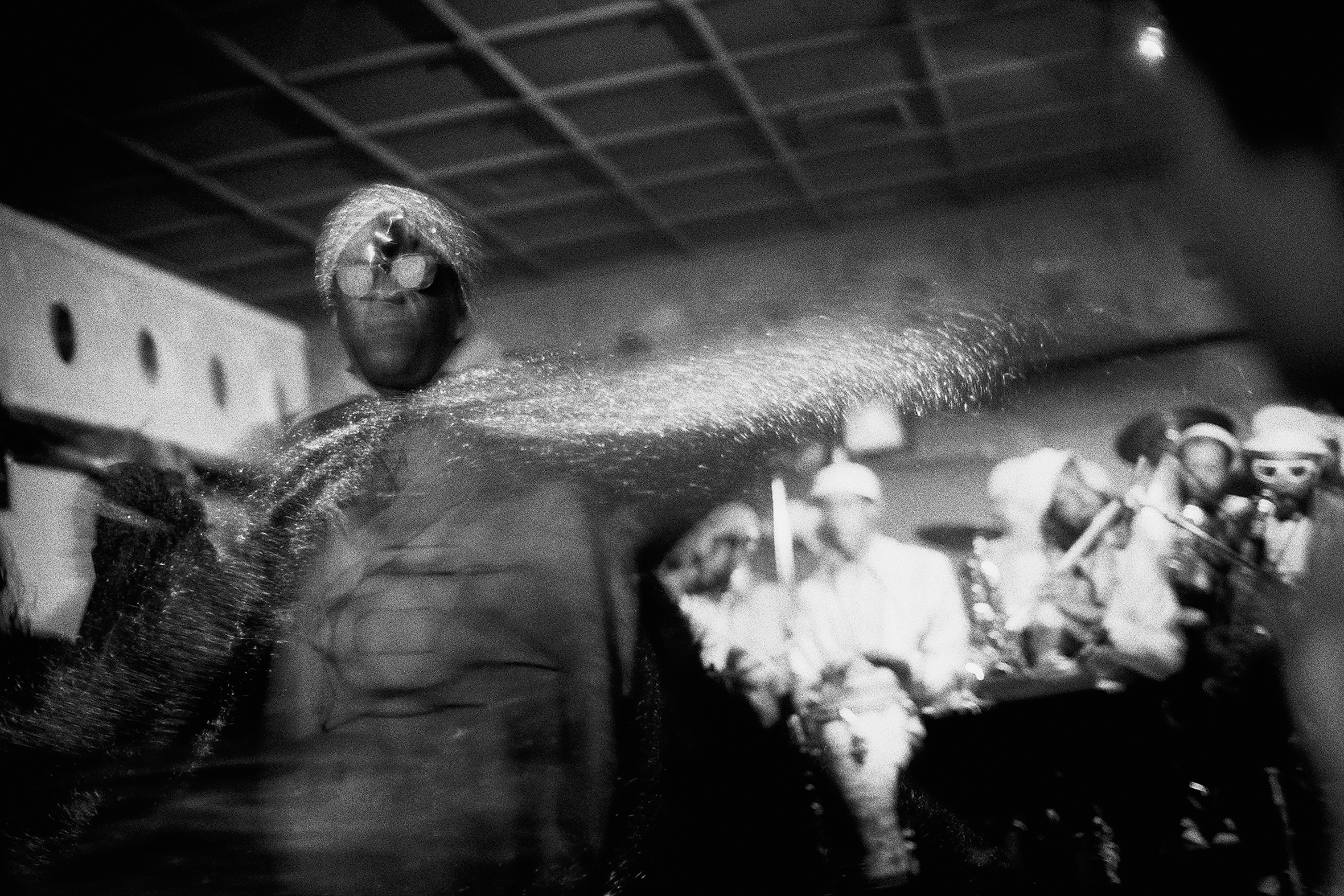
© the artist
Ming Smith: An Aperture Monograph (2020)
Ming Smith’s poetic and experimental images are icons of twentieth-century Black American life. Smith began experimenting with photography as early as kindergarten, when she made pictures of her classmates with her parents’ Brownie camera. She went on to attend Howard University, Washington, DC, where she continued her practice, and eventually moved to New York in the 1970s. Smith supported herself by modeling for agencies like Wilhelmina, and around the same time, joined the Kamoinge Workshop. In 1979, Smith became the first Black woman photographer to have work acquired by the Museum of Modern Art, New York.
Throughout her career, Smith has photographed various forms of Black community and creativity—from mothers and children having an ordinary day in Harlem, to her photographic tribute to playwright August Wilson, to the majestic performance style of Sun Ra. Her trademark lyricism, distinctively blurred silhouettes, and dynamic street scenes established Smith as one of the greatest artist-photographers working today. As Yxta Maya Murray writes for the New Yorker, “Smith brings her passion and intellect to a remarkable body of photography that belongs in the canon for its wealth of ideas and its preservation of Black women’s lives during an age, much like today, when nothing could be taken for granted.”
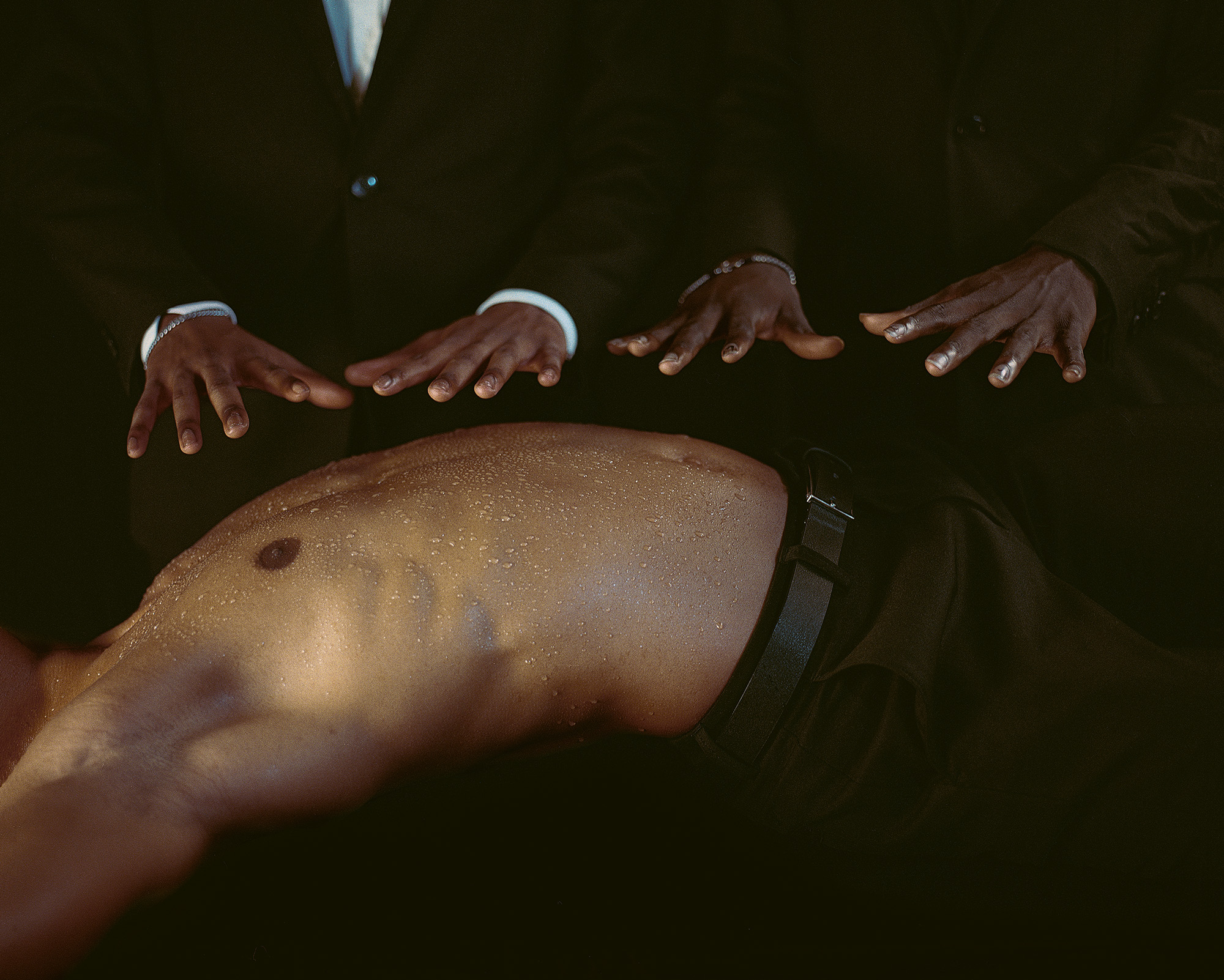
Courtesy the artist
Shikeith: Notes towards Becoming a Spill (2022)
A visceral and haunting exploration of Black male vulnerability, joy, and spirituality, Notes towards Becoming a Spill is the first monograph by the acclaimed multimedia artist Shikeith. Following the lyrical artistic expressions of contemporary portraitists such as Deana Lawson, Paul Mpagi Sepuya, and Mickalene Thomas, Shikeith photographs men as they inhabit various states of meditation, prayer, and ecstasy.
In work he describes as “leaning into the uncanny,” the faces and bodies of Shikeith’s collaborators glisten with sweat (and tears) in a manifestation and evidence of desire. This ecstasy is what the critic Antwaun Sargent proclaims as “an ideal, a warm depiction that insists on concrete possibility for another world.” Notes towards Becoming a Spill redefines the idea of sacred space and positions a queer ethic identified by its investment in vulnerability, tenderness, and joy.
Collect a limited-edition screenprint by Shikeith.
See here to browse the full collection of featured titles.
